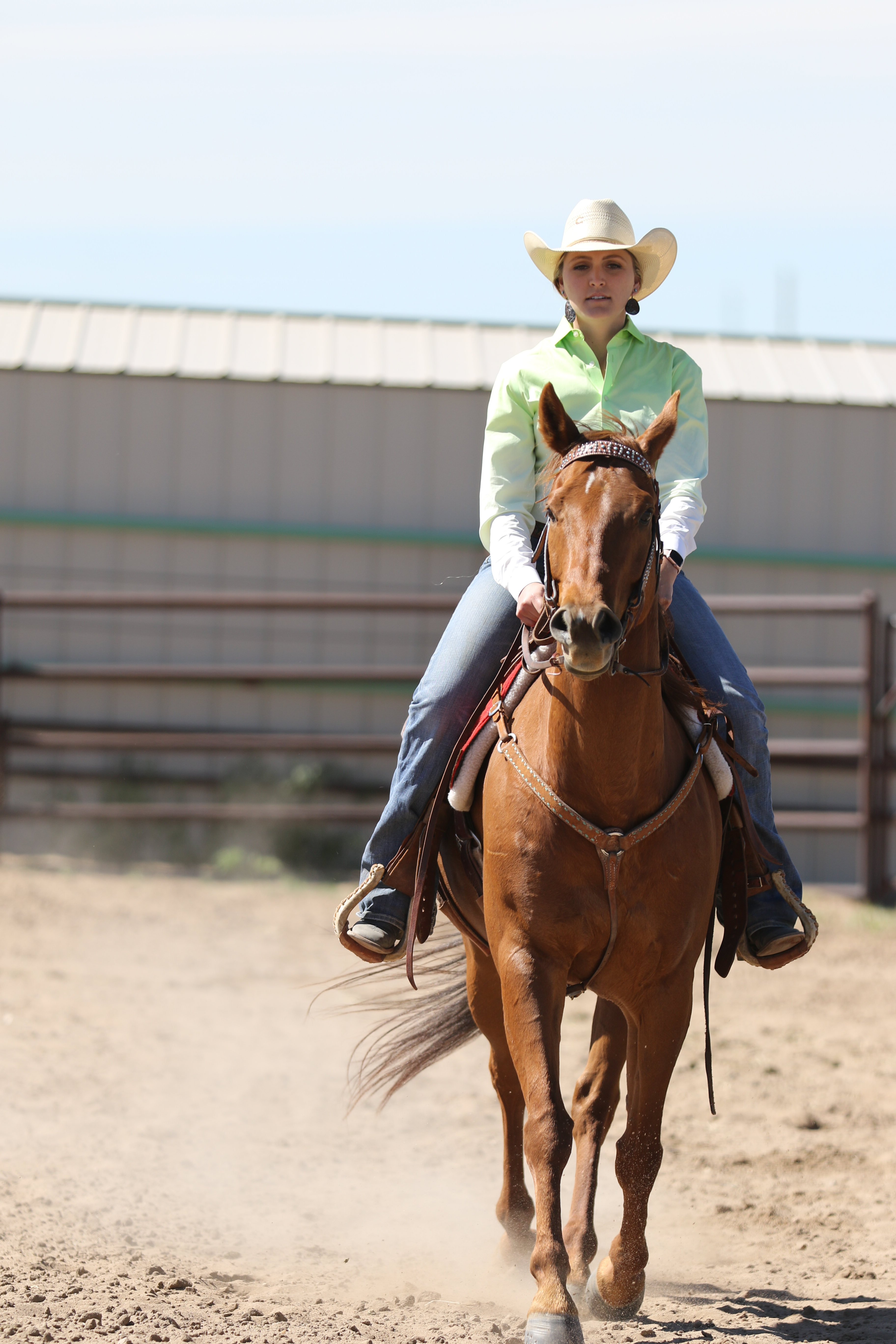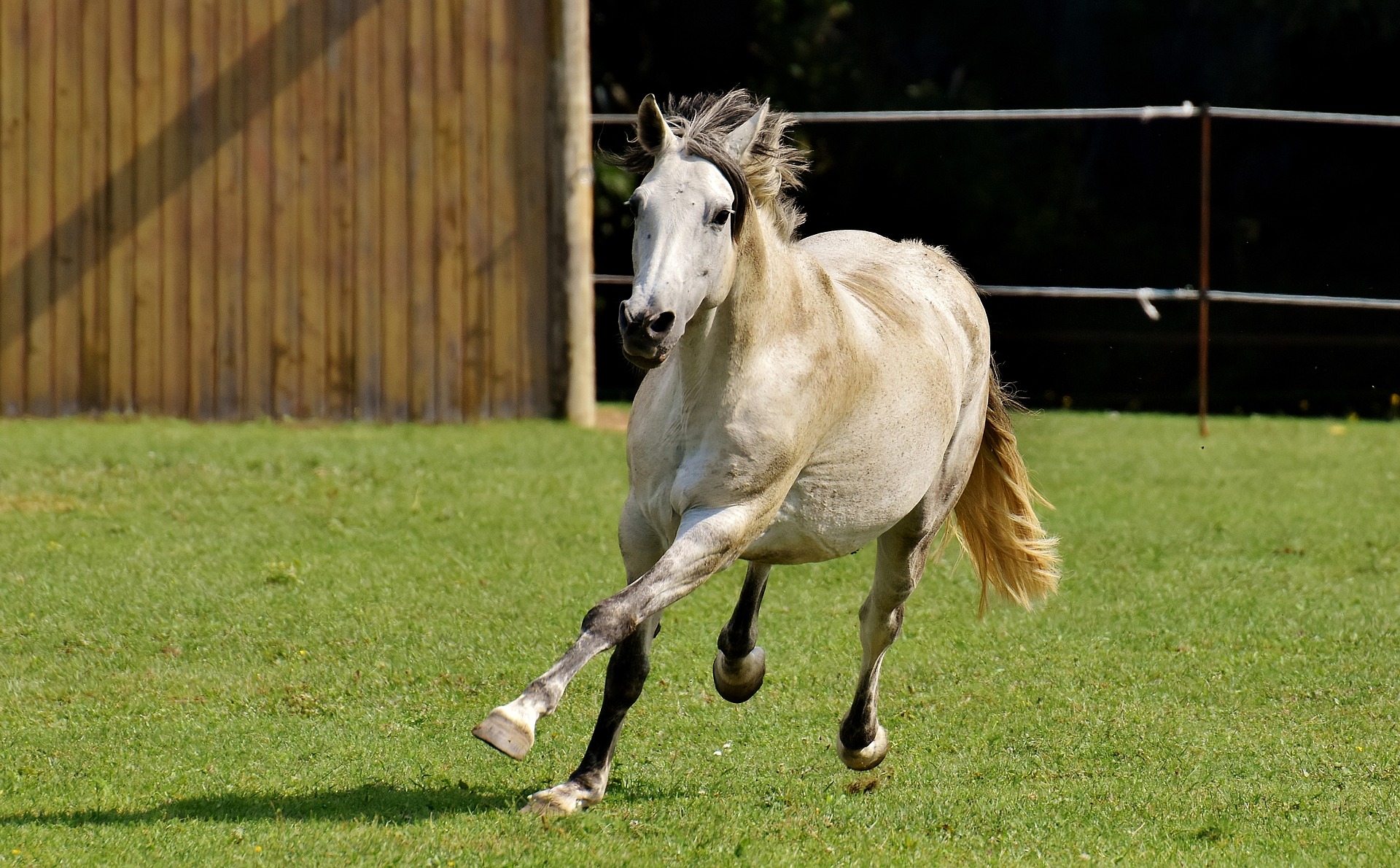Q I’m going to show in my first big reining event next month. I’ve attended smaller reining shows, but I’m overwhelmed thinking about the warm-up pen at a large event. What tips can you offer for safely navigating a crowded warm-up arena at a reining show?
Julie Samuels, Missouri
A I work with quite a few non-pro riders, so I’ve heard this concern before. Here I’ll give you 12 insights and tips for navigating a busy warm-up pen while accomplishing what you need to before you go show.
1. A larger show usually means a safer warm-up arena. When you compete at an event with more riders, that probably means it’s a prestigious show. Chances are that the majority of those riders will be more experienced and know how to navigate a crowded arena, meaning they’ll know to watch out for you. A smaller show is where you can run into problems, because those riders might not be as experienced and less in tune with what’s going on around them.
2. Go with the flow. It’s pretty obvious, but some people don’t follow this standard of any warm-up arena: This isn’t the time to go your own way. Go with the flow of traffic. There’s usually a pattern of travel that follows a figure 8, so it shouldn’t be a problem when you need to change directions.
3. Follow the group’s timing for fencing. If everyone in the pen is circling, that’s not the time to start fencing (loping your horse from one end of the arena to the other to practice rundowns) or working on stops. If you notice a few riders are gathering at the end of the pen, join them and wait for the arena to open up for straight-line work.
4. Take your spins out of the center. All of the arena’s traffic travels through the center of the arena as people circle to the left and right, so take your spins to the interior of one of the circles. Once there, be mindful of how close you are to other riders who are also working on spins, and be sure you don’t stray too close to the flow of the circling traffic.
5. Be aware. It’s easy to get so focused on your horse that you lose track of what’s going on around you. That’s simply not an option in a busy warm-up pen. Keep your eyes up—this is definitely not a time to let yourself stare at your horse’s neck as you travel along. Keep your peripheral vision on point at all times, and look where you’re going, as well as being aware of what’s going on behind you.
6. Look ahead on your path. Look half the arena ahead of you. This allows you plenty of time to redirect, should someone cross your path. Remember to think about where you’re going to be, not just where you are now.

7. No-phone zone. This is a hard and fast rule: If you’re in the warm-up arena, leave your phone in your pocket. Or better yet, leave it back at the tack stall to avoid temptation to take a call or return a text. Even if you’re airing up your horse and standing still, when you’re on your phone, your focus isn’t on what’s happening around you, and you can wind up in a wreck.
8. Don’t be afraid to speak up. There’s no shame in announcing your presence. If you see a wreck ahead and you can’t steer away from it, say, “outside” or “coming around.” Be sure to use a voice and tone that other riders will hear, otherwise it doesn’t do any good.
9. Air up inside the circles. If your horse needs to catch his breath—or you need to give yourself a timeout—do it in the middle of one of the circles. Stay out of the corners of the arena, because it can be hard for other riders to see you there. Furthermore, just because you’re taking a physical break doesn’t mean it’s time for a mental pause, too. You still must be aware of the other riders around you.
10. Follow the Golden Rule. Do unto others as you would have them do to you. Be polite, courteous, and friendly, especially if you’re a newcomer to the big-show scene. A friendly novice who just ran into the back of my horse is a lot easier to forgive (and even help and watch out for) than one who’s abrasive and unfriendly.
11. Find the hot-head, and stay away. Almost without fail, there’s at least one rider in the warm-up pen who makes life difficult for everyone else. He’s jerking on his horse, he’s going against traffic, and he’s going to hurt himself or someone else. Spot this rider as soon as you enter the arena (or, better yet, before), and steer clear.
12. Look before you stop. If you have to draw your horse into the ground (stop suddenly to correct him), be very aware of who’s behind you. Take a glance over your shoulder to ensure that you won’t cause a wreck before you say “whoa” and pick up the reins. Furthermore, by watching ahead of you (as noted in Tip 6), you should be able to redirect away from anyone else who has to stop suddenly.
Darren Stancik trains reining horses from Sky River Equestrian Center in Sultan, Washington. Stancik is an AQHA world champion, an NRHA Futurity finalist, an NRHA judge, and a recognized pro at working with amateur riders. Learn more about him at stancik-qh.com.
Q I show in all-around competition on my 11-year-old Paint mare, but my finances call for a break from showing. How can I keep my mare in good condition, both physically and mentally, for when we resume showing?
Barb Davenport, Wisconsin
A First, keep your horse on a regular exercise regimen. If you allow your mare to become a “pasture pet” during the break, she’ll quickly lose muscle tone, strength, flexibility, and endurance—all of which take time to regain.
Instead, maintain that condition by giving her some type of exercise every day, plus a modification of your typical training workout three times a week.
On workout days: These thrice-weekly workouts needn’t be as intense as those you’d do just before or during the show season, but they should get her blood pumping, her muscles working, and her mind focused.
In addition to your normal routine, try the following.
• Basic “power walking” to maintain/increase her flexibility and for general muscle conditioning. No strolling here; make her move forward at an energetic walk.
• Interspersed segments of jogging and long trotting for endurance and hindquarter-muscle maintenance.
• Lots of transitions, incorporating the walk, jog, long trot, and lope. For example, walk to jog, jog to lope, lope to walk, walk to long trot, long trot to lope, and so on. Vary the sequences to keep it interesting for your mare and to work different muscle groups.
• Circles, rollbacks, stops, back-ups. Again, change the patterns constantly to keep her thinking (and not anticipating).
As for more demanding maneuvers, such as sliding stops, spins, or flying lead changes, be judicious. Practice them just once a week or every two weeks.
On the ‘other’ days: Continue to provide your mare with exercise, but with less intensity—both physically and mentally. This can include the following.
• Longeing. Work 20 minutes total, working through the walk, jog, and lope in both directions, as well as asking for multiple changes of direction.
• Basic turnout. Most horses will run and play for a few minutes when first turned out, then graze or mosey about the rest of the time. That’s OK. This gives your mare a nice break from organized exercise while still encouraging her to move—toning her muscles and increasing her flexibility to some degree. Most importantly, this is good for her mind: She gets to just “be a horse” for a while.

• Hotwalker. I’m not big on hotwalking my horses every day or for extended periods of time. But, if you have access to a hotwalker, it’s a good way to give your mare a focused power walk. I recommend no more than 20 to 25 minutes at an energetic pace. (You may be surprised to learn that basic walking is excellent for building up hindquarter muscles.)
• Trail ride. If you don’t have access to trails, simply get out of the arena, even if that only involves riding around in a pasture. Walk, jog, do a little loping. This should be fun and refreshing for both of you, so don’t fuss about your position or your horse’s self-carriage and such. You’re just providing your mare with a change of scenery to help prevent boredom and burn out.
Final notes: Unless your vet advises you otherwise, don’t change your mare’s regular feeding routine. As long as you’re consistent with your exercise program, her weight should remain stable.
With this work plan during her time off, your mare will be ready, mentally and physically, for more intense training when you resume showing. Good luck!
Carol Metcalf, Pilot Point, Texas, is a world and national champion rider and trainer in multiple events.






